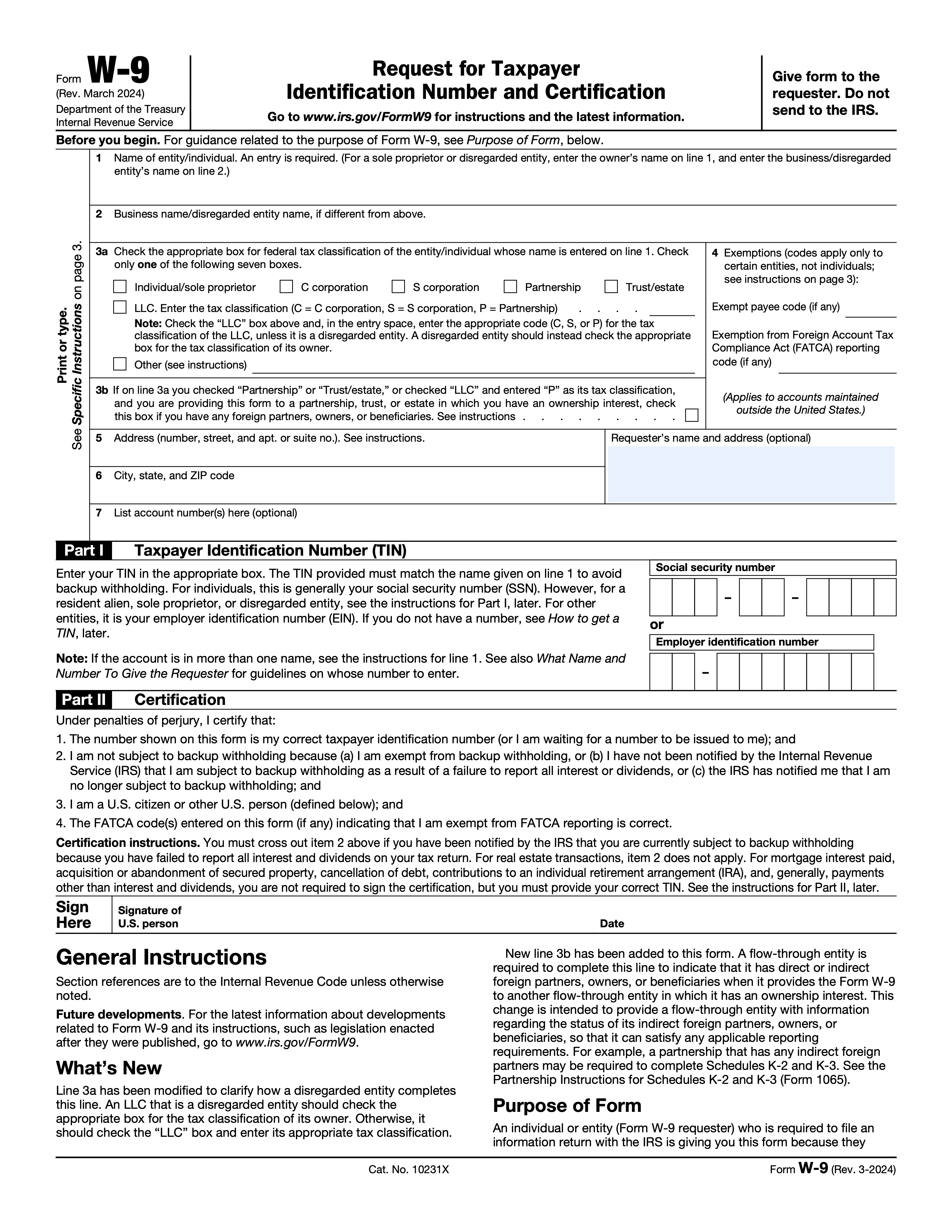

Your manual is waiting for you 🎉



Get W-9 Now 6741158300573dd00e00c67f
As an independent contractor or freelancer, it's essential to understand various tax forms that pertain to your business. One such form is the taxes W-9 form, which plays a crucial role in ensuring proper tax reporting. In this article, we will delve into the details of the editable W-9 form, its purpose, how to obtain and fill it out correctly and shed light on some cases where you may not use it.
The W-9 tax form, officially known as the "Request for Taxpayer Identification Number and Certification," is an Internal Revenue Service (IRS) form used to gather information from independent contractors, freelancers, and other self-employed individuals about their tax identification number (TIN) and legal name for tax purposes.
Clients who hire your services may require you to complete a W-9 form when working as an independent contractor or freelancer. This form helps them fulfill their obligation to report the payment they make to you to the IRS accurately.
The W-9 paper is a critical piece of documentation in the U.S. tax system, serving various administrative and compliance-related purposes. Main W-9 purpose of form is to provide necessary taxpayer information to help employers accurately report income paid to independent contractors and freelancers to the Internal Revenue Service (IRS). Businesses file this information using the 1099 form and retain a W9 copy for their records. If you are an independent contractor, your clients may ask you for a filled-out W-9 to correctly report the payments they've made to you.

Fill Out W-9 Form6741158300573dd00e00c67f
Filling out the W-9 form is pretty simple; here are key steps to avoid any potential issues with the IRS down the road:
Remember to securely send the filled W-9 form only to trusted individuals or establishments, considering its sensitive information. This way, you can confidently achieve accurate tax filing using the W-9 blank form.
Sign W-9 Form6741158300573dd00e00c67f
Signing a W-9 form online is becoming increasingly popular as it leads to greater efficiency and ease of document submission, particularly for freelancers and independent contractors who may not have access to printers and scanners. Here's a here are three ways you can sign this IRS form:
Obtaining a writable W-9 form is straightforward. You can either download a W-9 form online directly from the IRS website or use an online tax service. The downloadable W 9 in PDF can be filled electronically, helping to streamline your tax paperwork. It's worth noting that you must check for the most recent version since the IRS occasionally updates these forms. You need to provide an esign W-9 to validate your filled-out form.

There are instances where you should not fill out a W-9 form:
Please remember to consult with a tax or legal professional for advice suited to your specific situation if you have any questions.
These two forms have similarities in that U.S. financial institutions often require them to ensure compliance with tax laws. However, a W-8 form is primarily for entities who are foreign persons. In contrast, the W-9 is for U.S residents, including U.S citizens, resident aliens, and specific types of entities.
W-2 and W-9 forms are both crucial pieces of tax paperwork, but they are used for very different purposes. Whereas a W-9 is filled out by independent contractors and freelancers, a W-2 form is filled out by your employer if you're a regular employee, not a contractor. Your employer uses a W-2 form to report how much they've paid you in wages and how much they've withheld in taxes. On the other hand, the W 9 blank simply collects information about you as an independent contractor and does not report any payments or tax withholdings.
While they are related, it's essential to understand the difference between a W-9 and a 1099 form. A W-9 forms collects the Tax ID numbers and other relevant information from independent contractors and freelancers. 1099, on the other hand, is used by businesses to report to the IRS the amount of money they've paid to non-employees in the course of their business, such as contractors, freelancers or self-employed individuals.